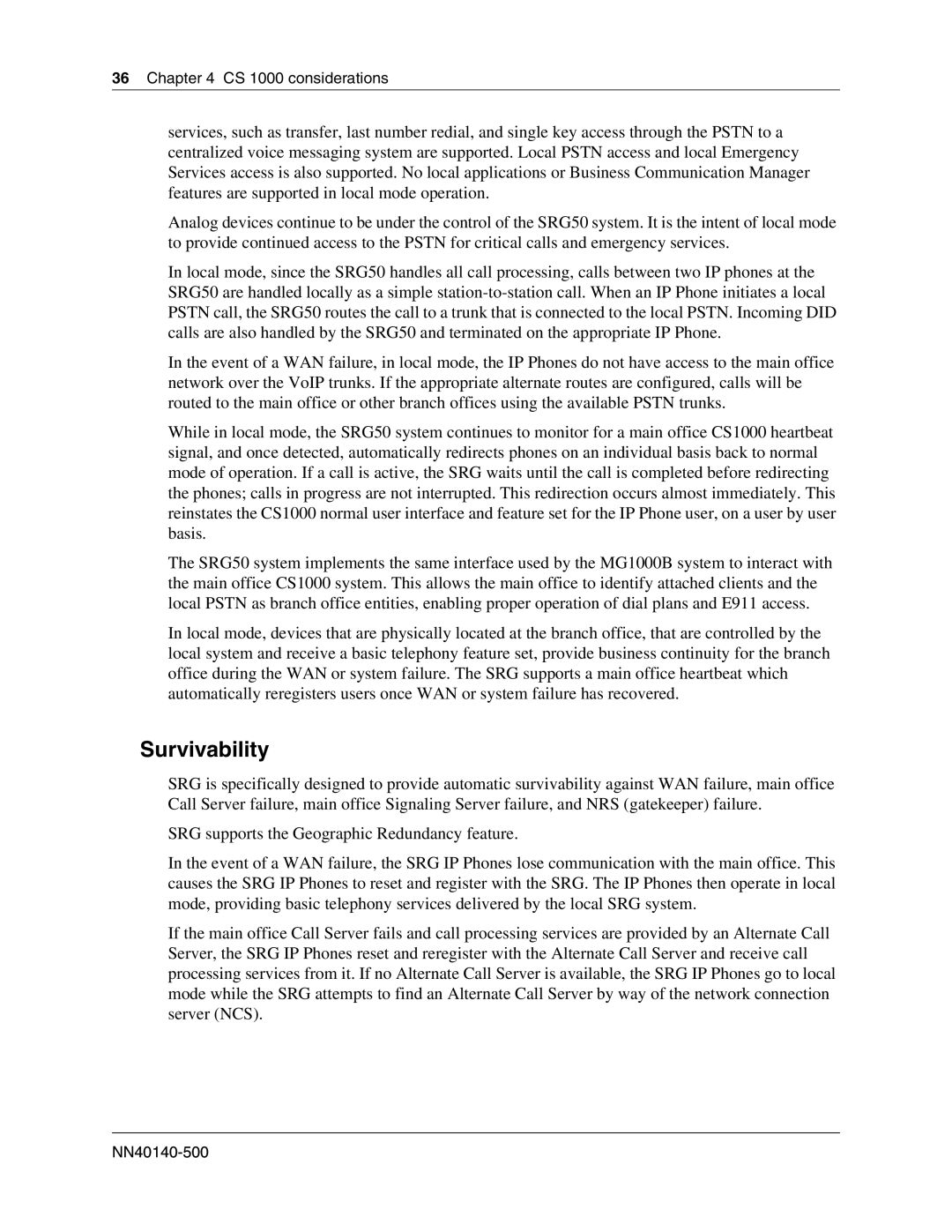
36 Chapter 4 CS 1000 considerations
services, such as transfer, last number redial, and single key access through the PSTN to a centralized voice messaging system are supported. Local PSTN access and local Emergency Services access is also supported. No local applications or Business Communication Manager features are supported in local mode operation.
Analog devices continue to be under the control of the SRG50 system. It is the intent of local mode to provide continued access to the PSTN for critical calls and emergency services.
In local mode, since the SRG50 handles all call processing, calls between two IP phones at the SRG50 are handled locally as a simple
In the event of a WAN failure, in local mode, the IP Phones do not have access to the main office network over the VoIP trunks. If the appropriate alternate routes are configured, calls will be routed to the main office or other branch offices using the available PSTN trunks.
While in local mode, the SRG50 system continues to monitor for a main office CS1000 heartbeat signal, and once detected, automatically redirects phones on an individual basis back to normal mode of operation. If a call is active, the SRG waits until the call is completed before redirecting the phones; calls in progress are not interrupted. This redirection occurs almost immediately. This reinstates the CS1000 normal user interface and feature set for the IP Phone user, on a user by user basis.
The SRG50 system implements the same interface used by the MG1000B system to interact with the main office CS1000 system. This allows the main office to identify attached clients and the local PSTN as branch office entities, enabling proper operation of dial plans and E911 access.
In local mode, devices that are physically located at the branch office, that are controlled by the local system and receive a basic telephony feature set, provide business continuity for the branch office during the WAN or system failure. The SRG supports a main office heartbeat which automatically reregisters users once WAN or system failure has recovered.
Survivability
SRG is specifically designed to provide automatic survivability against WAN failure, main office Call Server failure, main office Signaling Server failure, and NRS (gatekeeper) failure.
SRG supports the Geographic Redundancy feature.
In the event of a WAN failure, the SRG IP Phones lose communication with the main office. This causes the SRG IP Phones to reset and register with the SRG. The IP Phones then operate in local mode, providing basic telephony services delivered by the local SRG system.
If the main office Call Server fails and call processing services are provided by an Alternate Call Server, the SRG IP Phones reset and reregister with the Alternate Call Server and receive call processing services from it. If no Alternate Call Server is available, the SRG IP Phones go to local mode while the SRG attempts to find an Alternate Call Server by way of the network connection server (NCS).
